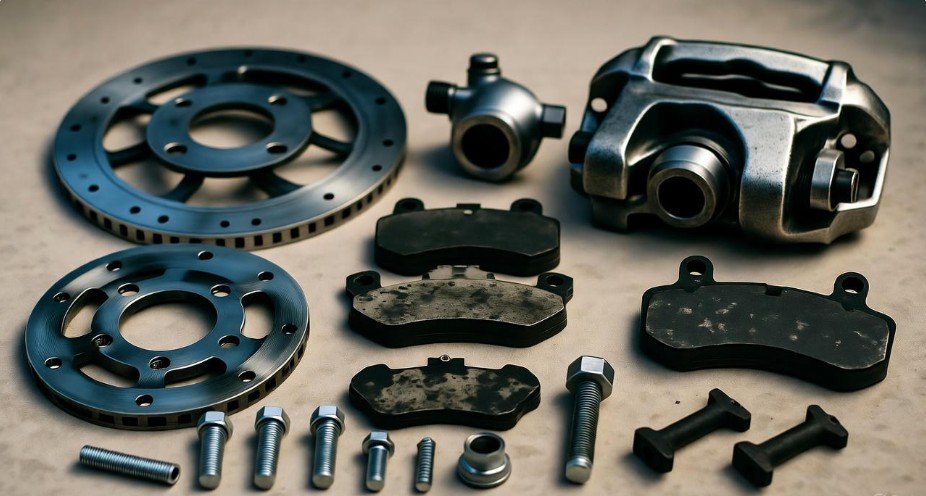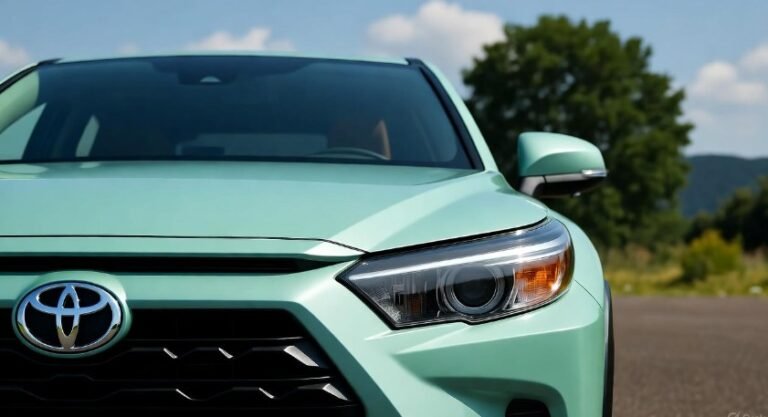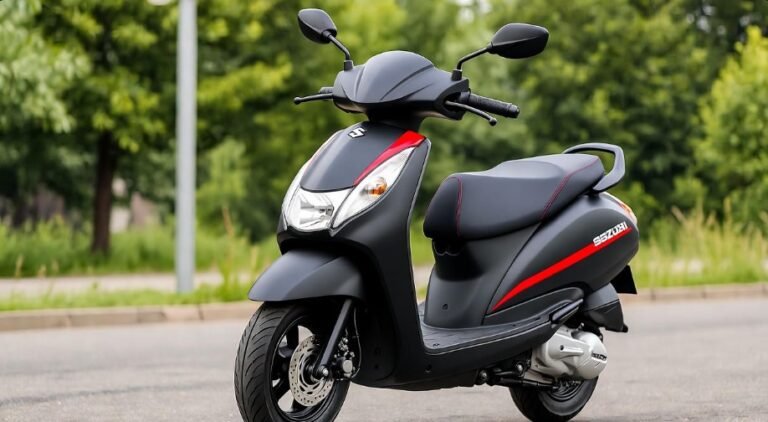Pulsar 150 Disc Brake Spare Parts

Your Pulsar 150 disc brake spare parts are readily available! This guide simplifies finding and maintaining essential components like brake pads, discs, and levers, ensuring your bike’s safety and performance.
Key Takeaways
- Identify common Pulsar 150 disc brake parts.
- Learn where to source quality spare parts.
- Understand the importance of regular brake maintenance.
- Find tips for checking brake fluid and pad wear.
- Discover when to replace your disc brake components.
- Ensure your Pulsar 150’s braking system remains reliable.
When it comes to motorcycle safety, few systems are as critical as your brakes. If you ride a Bajaj Pulsar 150, understanding its disc brake system and knowing where to find the right spare parts is paramount. Whether you’re a seasoned rider or just getting started, ensuring your brakes are in top condition is non-negotiable. This guide is designed to make navigating the world of Pulsar 150 disc brake spare parts straightforward and stress-free. We’ll cover everything you need to know, from identifying key components to sourcing reliable replacements. Let’s get your braking system back to optimal performance.
Understanding Your Pulsar 150 Disc Brake System
Your Pulsar 150 is equipped with a disc brake system, a sophisticated mechanism designed for effective stopping power. Unlike older drum brakes, disc brakes offer superior performance, especially in wet conditions, due to their ability to dissipate heat more efficiently. The system comprises several key components, each playing a vital role in bringing your motorcycle to a safe halt. Understanding these parts will help you identify what needs attention and what spare components you might need.
Essential Pulsar 150 Disc Brake Components
Here are the primary parts of your Pulsar 150’s disc brake system that you’ll commonly encounter when discussing spare parts:
- Brake Pads: These are the friction material that presses against the brake disc. They are the most frequently replaced part due to wear.
- Brake Disc (Rotor): A metal disc attached to the wheel hub. The brake pads clamp onto this to create friction and slow the wheel.
- Brake Caliper: This houses the brake pads and pistons. When you pull the brake lever, hydraulic fluid pushes the pistons, which in turn force the pads onto the disc.
- Brake Lever: Located on the handlebar, this is what you squeeze to activate the brakes.
- Brake Fluid Reservoir: Stores the hydraulic fluid that transmits force from the lever to the caliper.
- Brake Hose/Line: Connects the master cylinder (at the lever) to the caliper, carrying the hydraulic fluid.
- Master Cylinder: Converts the physical force of your lever pull into hydraulic pressure.
Each of these parts is crucial. A worn brake pad can reduce stopping power, while a damaged brake disc can be dangerous. Knowing their function makes maintenance and replacement much clearer.
Why Regular Maintenance of Pulsar 150 Disc Brakes is Crucial
Riding a motorcycle like the Pulsar 150 means you’re constantly relying on its braking system for your safety and the safety of others. Disc brakes, while effective, are subjected to significant stress and wear during operation. Regular maintenance isn’t just about ensuring optimal performance; it’s a critical safety practice.
Neglecting your brake system can lead to:
- Reduced stopping distance
- Brake fade (loss of braking power due to overheating)
- Damage to other, more expensive components
- Complete brake failure
A proactive approach, including regular checks and timely replacement of worn parts, will keep your Pulsar 150 responsive and safe on the road. Think of it as an investment in your riding experience and well-being.
Common Pulsar 150 Disc Brake Spare Parts You’ll Need
As your Pulsar 150 racks up miles, certain parts of the disc brake system will inevitably wear out and require replacement. The most common culprits are the brake pads, followed by the brake disc itself. Understanding these specific parts and their wear patterns is key to knowing when to buy spares.
Brake Pads: The Wear-and-Tear Heroes
Brake pads are designed to be sacrificial. Their material is intended to wear down over time, absorbing the friction generated during braking.
Signs Your Pulsar 150 Brake Pads Need Replacing:
- Squealing or Grinding Noises: Often, worn pads have a metal wear indicator that makes a high-pitched noise when they’re nearly gone. Grinding indicates metal-on-metal contact, which is damaging and dangerous.
- Reduced Braking Performance: If you notice you have to squeeze the brake lever harder or for longer to achieve the same stopping power, your pads are likely worn.
- Visible Wear: You can often visually inspect the pads. If the friction material is less than 3mm thick (about the thickness of two pennies stacked), it’s time for a change.
When purchasing replacement brake pads, ensure they are specifically designed for the Pulsar 150 disc brake system. There are generally two main types of brake pads:
- Organic (Resin) Pads: Softer, quieter, and easier on the brake disc, but wear out faster and can perform less effectively in extreme heat.
- Sintered (Metallic) Pads: Harder, offer more stopping power, and last longer, but can be noisier, wear the disc faster, and may require more heat to operate at peak performance.
For typical urban riding on a Pulsar 150, organic pads are often sufficient. Consult your owner’s manual or a reputable mechanic if you’re unsure. You can find excellent quality replacement brake pads from authorized Bajaj dealers and well-known aftermarket parts manufacturers.
Brake Discs (Rotors): The Stalwart Workhorse
The brake disc (or rotor) is a more durable component than the pads but can also wear out or become damaged over time.
Signs Your Pulsar 150 Brake Disc Needs Replacing:
- Warping: If you feel a pulsing sensation in the brake lever when you apply the brakes, the disc might be warped due to overheating.
- Grooves or Scoring: Deep scratches or uneven wear on the disc surface can reduce braking effectiveness and accelerate pad wear.
- Excessive Thinning: Brake discs have a minimum thickness specified by the manufacturer. If the disc wears down to this limit, it must be replaced.
- Cracks: Any visible cracks in the disc are a serious safety hazard and require immediate replacement.
Replacing a brake disc is a more involved process than changing pads, and often it’s recommended to have a professional do it. However, understanding the signs of wear will help you know when this significant maintenance is due.
Other Important Pulsar 150 Disc Brake Parts
While pads and discs are most common, other parts can also fail:
- Brake Levers: Can break in a fall or become bent and uncomfortable to use. Simple replacement is usually straightforward.
- Brake Hoses: Over time, rubber hoses can degrade or develop leaks. If you suspect a leak, or if the hose appears cracked or swollen, it needs replacement. It’s also advisable to replace them if they are very old, even if no visible issues are present.
- Brake Fluid: While not a “part” in the same sense, brake fluid degrades over time. It absorbs moisture, which lowers its boiling point and can lead to brake fade and corrosion within the system. It should be flushed and replaced periodically, typically every 1-2 years. A fluid check is a common maintenance item.
Where to Find Pulsar 150 Disc Brake Spare Parts
Sourcing genuine and high-quality spare parts is crucial for the longevity and safety of your Pulsar 150. Using counterfeit or low-quality parts can lead to premature failure and compromise your safety.
Authorized Bajaj Service Centers
The most reliable place to get Pulsar 150 disc brake spare parts is an authorized Bajaj service center.
Benefits:
- Genuine Parts: You are guaranteed to get OEM (Original Equipment Manufacturer) parts, designed specifically for your Pulsar 150.
- Expert Advice: Technicians can help you identify the exact parts you need and offer installation advice.
- Warranty: Genuine parts often come with a manufacturer’s warranty.
Reputable Aftermarket Brands
There are many reputable aftermarket manufacturers that produce high-quality spare parts for motorcycles.
Considerations:
- Quality: Look for brands known for their quality and reliability in the motorcycle parts industry.
- Reviews: Read online reviews from other Pulsar 150 owners to gauge the performance and durability of aftermarket parts.
- Compatibility: Always double-check that the aftermarket part is listed as compatible with the Bajaj Pulsar 150 model year.
Some popular and trusted aftermarket brands for brake components include Brembo, EBC Brakes, and Vesrah, among others.
Online Retailers and Motorcycle Parts Stores
Many online platforms and local motorcycle parts stores also carry a wide range of Pulsar 150 disc brake spare parts.
Tips for Buying Online:
- Verify Seller Reputation: Buy from well-established retailers with good customer service and return policies.
- Check Part Numbers: Match part numbers from your owner’s manual or old part with the listing precisely.
- Read Descriptions Carefully: Ensure the part is specified for your exact Pulsar 150 model and year.
Examples of reputable online retailers include RevZilla, Cycle Gear (also has physical stores), and sometimes even Amazon or eBay, provided you are buying from trusted sellers.
DIY: Checking and Replacing Pulsar 150 Disc Brake Components
Performing basic maintenance on your Pulsar 150’s disc brakes can save you money and help you stay familiar with your bike’s condition. While replacing brake pads is a manageable DIY task for many, replacing the brake disc or dealing with hydraulic fluid might be best left to professionals, especially if you’re new to motorcycle maintenance.
How to Check Your Brake Pad Wear (DIY)
This is a crucial check that most owners can perform regularly.
Tools You Might Need:
- Gloves
- Shop towels or rags
- Flashlight
- Your owner’s manual
Steps:
- Locate the Brake Caliper: This is usually visible on the front and rear wheels, attached to the forks or swingarm.
- Visually Inspect Pads: Look through the spokes of the wheel (if possible) or around the caliper to see the brake pads. You want to see the entire pad, including the friction material.
- Assess Thickness: The friction material should be at least 3mm thick. If it looks significantly thinner, or if you can see the metal backing plate, it’s time for replacement.
- Check for Uneven Wear: Ensure the pad material is wearing evenly. Uneven wear can indicate a caliper issue.
How to Replace Pulsar 150 Brake Pads (DIY Guide)
Replacing brake pads is a common maintenance task. Always refer to your Pulsar 150’s service manual for specific instructions for your model year.
Tools You’ll Need:
- New brake pads for your Pulsar 150
- Socket wrench set or combination wrenches (sizes vary by bolt)
- Pliers (for cotter pins, if applicable)
- C-clamp or brake piston tool
- Brake cleaner
- Gloves
- Shop towels
- Torque wrench (recommended for reassembly)
Steps:
- Secure the Motorcycle: Ensure your bike is on a stable, level surface, preferably with a center stand or paddock stand to keep the wheel off the ground.
- Remove the Caliper Bolts: Loosen and remove the bolts holding the brake caliper in place. You might need to remove a cotter pin first, depending on your model.
- Remove the Caliper: Carefully slide the caliper off the brake disc. It might hang by a brake hose, but avoid letting it dangle excessively by the hose. You can carefully rest it on a small block or tie it up.
- Remove Old Brake Pads: The old pads are usually held in place by pins or clips. Remove these and slide out the old pads. Note their orientation.
- Inspect the Caliper: While the pads are out, check the piston(s) for any signs of damage or corrosion. Gently push the piston(s) back into the caliper using a C-clamp or brake piston tool. This allows room for the new, thicker pads. Make sure to open the master cylinder cap (carefully!) before pushing pistons back to prevent fluid overflow.
- Install New Brake Pads: Insert the new brake pads into the caliper. Ensure they are oriented correctly, matching the old pads. Replace any pins or clips.
- Reinstall the Caliper: Slide the caliper back over the brake disc and align it with its mounting holes.
- Reinstall Caliper Bolts: Secure the caliper with its bolts. Tighten them to the manufacturer’s specified torque using a torque wrench. This is critical for safety.
- Pump the Brake Lever: Before riding, squeeze the brake lever several times until it feels firm. This will reseat the pistons and pads.
- Test Brakes: Gently roll the motorcycle forward and backward to ensure the wheel spins freely. Test the brakes at a very low speed in a safe area.
Pro Tip: Always replace brake pads in pairs (both sides of the same wheel) even if only one pad appears worn. This ensures even braking performance.
Checking Brake Fluid Levels and Condition
Brake fluid is the lifeblood of your hydraulic braking system. Keeping it at the right level and in good condition is vital.
Tools You’ll Need:
- Service manual for your Pulsar 150
- Clean rags
- DOT 3 or DOT 4 brake fluid (check your manual for the correct type!)
- Funnel (optional, for topping up)
Steps:
- Locate the Reservoir: Find the small translucent or metal reservoir attached to the master cylinder on your handlebar.
- Check Level: Most reservoirs have “MIN” and “MAX” lines. Ensure the fluid level is between these lines. If it’s low, it could indicate worn pads (as the fluid level drops) or a leak.
- Check Condition: Ideally, brake fluid should be clear or slightly amber. If it appears dark, murky, or has visible contamination, it’s time for a flush and replacement.
- Topping Up (If Necessary): If the fluid is low but not critically so, and you’ve confirmed pads aren’t excessively worn (or you’ve just replaced them), you can carefully top it up to the MAX line using the correct DOT fluid. Be careful not to overfill.
- Brake Fluid Flush and Replacement: If the fluid is old or contaminated, it’s recommended to have the entire system flushed and refilled by a professional or by following a detailed guide from your service manual. This is a critical safety procedure.
External Resource: For a deeper understanding of brake fluid types and why they matter, consult resources like the National Highway Traffic Safety Administration (NHTSA) guidelines on brake system maintenance.
Table: Common Pulsar 150 Disc Brake Spare Parts and Their Lifespan
Knowing the expected lifespan of your brake parts helps in planning maintenance and purchases. These are general estimates and can vary significantly based on riding style, conditions, and maintenance.
| Part Name | Estimated Lifespan (Miles/Km) | Key Considerations |
|---|---|---|
| Front Brake Pads | 8,000 – 15,000 miles (13,000 – 24,000 km) | Heavily dependent on rider habit, load, and conditions. |
| Rear Brake Pads | 12,000 – 20,000 miles (19,000 – 32,000 km) | Often last longer than front pads as they’re used less intensively. |
| Brake Disc (Rotor) | 25,000 – 50,000 miles (40,000 – 80,000 km) | Can be affected by pad material, riding style, and cleanliness. Replacement often due to damage or wear beyond minimum thickness. |
| Brake Fluid | Every 1-2 Years (regardless of mileage) | Absorbs moisture over time, reducing boiling point and causing corrosion. |
| Brake Lever | As needed | Typically only replaced if bent, broken, or damaged in an accident. |
Troubleshooting Common Pulsar 150 Disc Brake Issues
Even with proper maintenance, you might encounter occasional issues with your Pulsar 150’s disc brakes. Here are some common problems and how to approach them.
Spongy or Soft Brake Lever
A brake lever that feels soft or spongy is a classic sign of air in the brake lines or low/contaminated brake fluid.
Possible Causes:
- Air bubbles in the hydraulic system (requires bleeding).
- Low brake fluid level.
- Degraded or contaminated brake fluid.
- Leak in the brake hose or caliper seals.
Solution: Check brake fluid level and condition first. If it’s acceptable, the system likely needs to be bled. If fluid is low or you suspect a leak, have it inspected by a professional.
Brake Noise (Squealing, Grinding)
Noises from your brakes are usually a warning sign.
Possible Causes:
- Squealing: Often caused by worn brake pads (wear indicator), glazed pads, or sometimes just vibration from new pads not yet bedded in.
- Grinding: Almost always indicates the brake pad’s friction material is completely worn away, and the metal backing is grinding against the disc. This is a serious issue and requires immediate attention to prevent disc damage.
- Clunking: Could indicate loose caliper bolts or worn brake disc mounting.
Solution: For squealing, inspect pad thickness. If nearly gone, replace them. If they look okay, try cleaning the pads and disc. Grinding requires immediate pad and potentially disc replacement. Clunking needs a check of mounting hardware.
Brakes Overheating (Brake Fade)
If your brakes feel less effective after prolonged or heavy use, especially downhill, this is brake fade.
Possible Causes:
- Brake fluid has absorbed moisture and has a lower boiling point.
- Worn brake pads and discs generate excessive heat.
- Overuse of brakes without allowing them to cool.
Solution: Ensure your brake fluid is fresh and replaced regularly. Check pad and disc condition. Avoid prolonged heavy braking; use engine braking where possible on descents.
FAQ: Pulsar 150 Disc Brake Spare Parts
Q1: How often should I check my Pulsar 150 brake pads?
You should visually inspect your brake pads at least once a month or every few hundred miles. More frequent checks are recommended if you ride in dusty or wet conditions, or if you notice any changes in braking performance or noise.
Q2: Can I use brake pads from another motorcycle model on my Pulsar 150?
It is highly recommended to only use brake pads specifically designed for the Bajaj Pulsar 150. Using incompatible pads can lead to poor fit, reduced performance, and potential damage to your brake caliper or disc.
Q3: What is the difference between organic and metallic brake pads for my Pulsar 150?
Organic pads are softer, quieter, and kinder to the disc, but wear faster and may not perform as well in extreme heat. Metallic (sintered) pads offer higher performance and longevity but can be noisier and wear the disc more aggressively.
Q4: How do I know if my Pulsar 150 brake disc needs replacement?
Signs include warping (pulsing lever), deep grooves or scoring on the surface, visible cracks, or wear beyond the manufacturer’s minimum thickness specification. Always consult your service manual for the exact minimum thickness.
Q5: What type of brake fluid does the Pulsar 150 use?
The Bajaj Pulsar 150 typically uses DOT 3 or DOT 4 brake fluid. Always confirm the exact specification in your owner’s manual, as using the wrong type can damage the system.
Q6: Is it safe to ride with worn brake pads?
No, riding with worn brake pads is extremely dangerous. It significantly reduces your stopping power, increasing the risk of accidents. It can also lead to further damage to the brake disc and caliper.
Q7: Where can I find reliable Pulsar 150 disc brake spare parts in the USA?
You can find reliable parts at authorized Bajaj service centers, reputable aftermarket parts manufacturers (like EBC, Brembo), and well-known online motorcycle parts retailers who clearly specify compatibility with your Pulsar 150 model.
Conclusion
Maintaining the disc brake system on your Bajaj Pulsar 150 is a critical aspect of responsible motorcycle ownership. By understanding the key components, recognizing signs of wear, and knowing where to source quality Pulsar 150 disc brake spare parts, you empower yourself to keep your bike safe and performing at its best. Whether you’re performing simple checks yourself or entrusting a mechanic with more complex tasks, staying informed ensures your ride remains enjoyable and secure. Remember, your brakes are your first line of defense on the road, so give them the attention they deserve.





